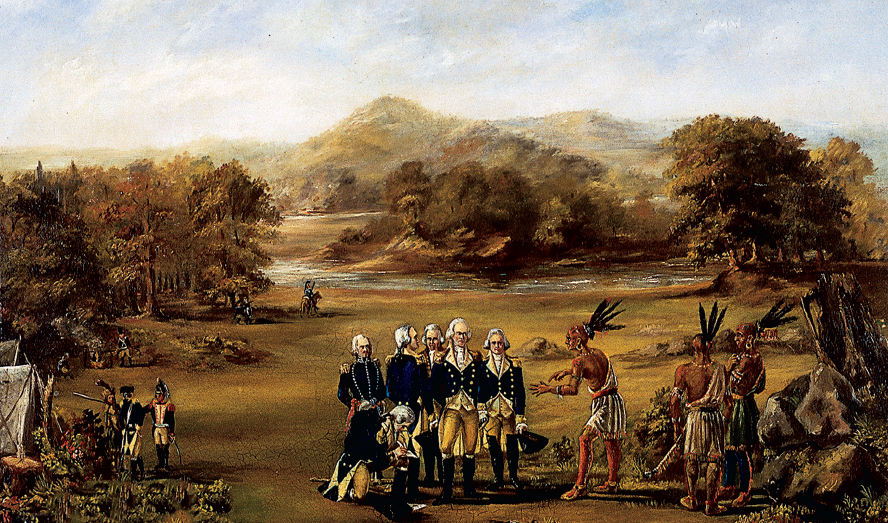What external threats did the United States face in the 1790s?
Printed Page 246

CHRONOLOGY
1789
- –French Revolution begins.
- –Fort Washington is erected in western Ohio.
1790
- –Indians in Ohio defeat General Josiah Harmar.
- –Treaty of New York.
1791
- –Ohio Indians defeat General Arthur St. Clair.
- –Haitian Revolution begins.
1793
- –War between Great Britain and France begins in Europe.
- –Washington issues Neutrality Proclamation.
1794
- –Battle of Fallen Timbers.
1795
- –Treaty of Greenville.
- –Jay Treaty.
WHILE THE WHISKEY REBELS challenged federal leadership from within the country, disorder threatened the United States from external sources as well. From 1789 onward, serious trouble brewed in four directions. To the southwest, Creek Indians pushed back against the westward-moving white southern population, giving George Washington an opportunity to test diplomacy. To the northwest, a powerful confederation of Indian tribes in the Ohio Country resisted white encroachment, resulting in a brutal war. At the same time, conflicts between the major European powers forced Americans to take sides and nearly pulled the country into another war. And to the south, a Caribbean slave rebellion raised fears that racial war might be imported to the United States. Despite these grave prospects, Washington won reelection to the presidency unanimously in the fall of 1792.